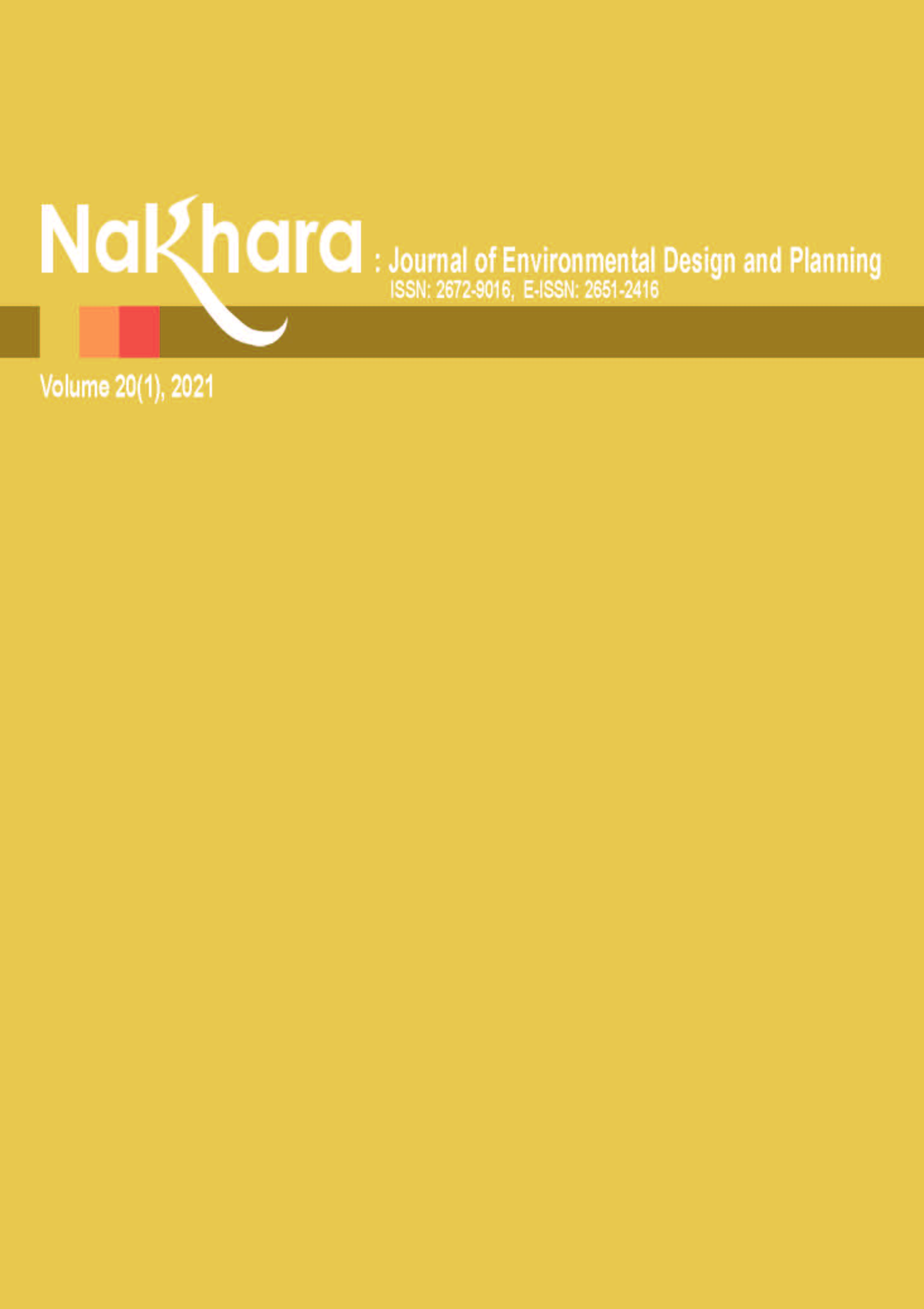The Structural Analysis of Virtual Social Capital for Urban Resilience in a Metropolitan Area: The case of Tokyo and Bangkok
Main Article Content
Abstract
This study clarified the structure in which virtual social capital (SC) affects the quality of life (QOL) and promotes urban resilience in a metropolitan area. It has been determined that assistance from neighboring residents and acquaintances is essential for community resilience and is considered one of the critical factors in urban systems' resilience. These social ties among residents are called SC. In today's metropolises, social ties with others are shifting from face-to-face relationships to virtual relationships. In this study, virtual SC is defined as a weak virtual network formed among people through social media, email, telephones, letters, which is less overlapped with networks formed in face-to-face networks. Also, direct communication online positively affects psychological and personal well-being (QOL).
The case study in this paper examines the Tokyo metropolitan region and Bangkok metropolitan region. A web-based survey was administered among those in the younger generation who communicate daily using online tools, and 193 valid responses were collected. Structural Equation Modeling was used to analyze. This study's hypothesis model is the structure that virtual SC affects urban resilience through the quality of life. The difference in structure was identified as both ordinary time and the period of emergency declaration.
Virtual SC affected urban resilience through QOL during ordinary times. On the other hand, Virtual SC directly worked towards urban resilience during the period of an emergency declaration. Moreover, the use of media with bridging actors forms rich virtual SC and improves urban resilience. Finally, some recommendations of virtual SC use for urban resilience in a metropolitan area were discussed.
Article Details

This work is licensed under a Creative Commons Attribution-NonCommercial-NoDerivatives 4.0 International License.
References
Aldrich, D.P. (2010). Fixing recovery: Social capital in post-crisis resilience. Journal of Homeland Security, 6, 1–10.
Aldrich, D.P. (2012). Building resilience. The University of Chicago Press.
Anderson, M. B., & Woodrow, P. J. (1998). Rising from the ashes: Development strategies in times of disaster. Intermediate Technology Publication.
Burke, M., Kraut, R., & Marlow, C. (2011). Social capital on Facebook: Differentiating uses and users. Proceedings of the SIGCHI Conference on Human Factors in Computing Systems, 571-580.
Burt, R.S. (1995). Structural holes: The social structure of competition. Harvard University Press.
Claridge, T. (2018). Dimensions of social capital – Structural, cognitive, and relational. Social Capital Research, 1-4.
Frankenberger, T., Mueller, M., Spangler, T., & Alexander, S. (2013). Community resilience: Conceptual framework and measurement feed the future learning agenda. Westat.
Grootaert, C., & Bastelaer, T.V. (2001). Understanding and measuring social capital: A synthesis of findings and recommendations from the social capital initiative. Social Capital Initiative Working Paper, 24.
Halpern, D. (2005). Social capital. Polity Press.
Joseph, J. J., (2020). Facebook, social comparison, and subjective well- being: An examination of the interaction between active and passive Facebook use on subjective well-being. In Desjarlais M. (Eds.), The psychology and dynamics behind social media interactions. Hershey, PA: IGI Global.
Kahai, S. S., & Lei, Y. (2019). Building social capital with Facebook: Type of network, availability of other Media, and social self-efficacy matter. International Journal of Human-Computer Studies, 130, 113-129.
Kim, J., & Hastak, M. (2018a). Social network analysis: Characteristics of online social networks after a disaster. International Journal of Information Management, 38, 86-96.
Kim, J., Bae, J. & Hastak, M. (2018b). Emergency information diffusion on online social media during storm Cindy in U.S. International Journal of Information Management, 40, 153-165.
Kraut, R., & Burke, M. (2015). Internet use and psychological well-being: Effects of activity and audience. Communications of the ACM, 12, 94-100.
Lee, S., Chung, J. E., & Park, N. (2018). Network environments and well-being: An examination of personal network structure, social capital, and perceived social support. Health Communication, 31(1), 22-31.
Lin, N. (2008). A network theory of social capital. In Castiglione, D., Deth, J.W.V., & Wolleb G. (Eds.), The handbook of social capital. Oxford University Press.
Putnam, R. D. (1993). Making democracy work. Princeton University Press.
Rockefeller foundation. (2015). City resilience framework. Arup.
Rus, K., Kilar, V., & Koren, D. (2018). Resilience assessment of complex urban systems to natural disasters: A new literature review. International Journal of disaster risk reduction, 31, 311-330.
Sanyal, S., & Routray, J. K. (2016). Social capital for disaster risk reduction and management with empirical evidences from Sundarbans of India. International Journal of Disaster Risk Reduct, 19, 101–111.
Shiozaki, Y., Kato, T., & Sugata, H. (2015). The concepts of urban system resilience to natural disasters. Journal of Japan Society of Civil Engineers, D3 71(3), 127-140. (in Japanese)
Sinclair, T. J., & Grieve, R. (2017). Facebook as a source of social connectedness in older adults. Computers in Human Behavior, 66, 363-369.
Spottswood, E. L., & Wohn, D. Y. (2020). Online social capital: recent trends in research. Current Opinion in Psychology, 36, 147–152.
Turner II, B. L., Kasperson, R. E., Matson, P. A., McCarthy, J. J., Corell, R. W., Christensen, L., Eckley, N., Kasperson, J. X., Luers, A., Martello, M. L., Polsky, C., Pulsipher, A., & Schiller, A. (2003). A framework for vulnerability analysis in sustainability science. Proceedings of the National Academy of Sciences of the United States of America, 100(14), 8074-8079.
Uphoff, N. (2000). Understanding social capital: learning from the analysis and experience of participation. In Dasgupta, P., & Serageldin, I. (Eds.), Social capital: A multifaceted perspective. The World Bank.
WHO. (1996). WHOQOL-BREF Introduction, Administration, Scoring and Generic Version of the Assessment. Geneva, CH: WHO.
Williams, D. (2006). On and off the ’Net: Scales for Social Capital in an Online Era. Journal of Computer-Mediated Communication, 11(2), 593-628.
Wisner, B., Blaikie, P., Cannon, T., & Davis, I. (2003). At risk. Routledge.

